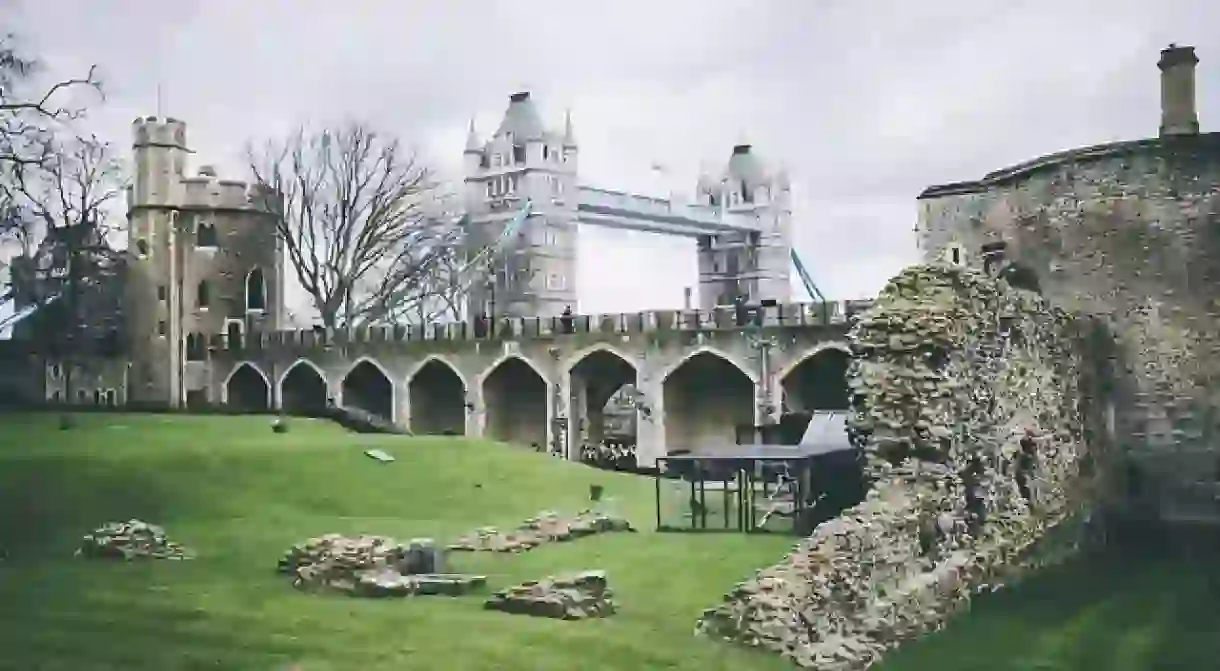The History of Tower Hamlets in 5 Places

Better known as the heart of the East End, the borough of Tower Hamlets offer an impressive wealth of culture and history to explore. Tourists flock to the world famous Tower Bridge & Tower of London to discover these ancient sites and be immersed in hundreds of years’ worth of local history. Whether you’re visiting the older sites or enjoying the modern shopping and eating districts of Canary Wharf and the surrounding Docklands, there’s something for everyone.
Experience the Tower Bridge Exhibition
Situated on the River Thames, in the heart of the city, Tower Bridge is an iconic London landmark dating back to the Victorian era. First opened to the public in 1894 the bridge has been in use ever since and is a mechanical marvel.
The accompanying exhibition enables tourists to explore inside the tower, stroll across the elevated walkways and discover the working history of the engine rooms. Since December 2014, the new glass floor attraction has been a hit with visitors and offers panoramic views of the city, taking in landmarks such as St Paul’s Cathedral, The Tower of London and The Shard. The famous bridge lifts are another sight not to be missed; if you’re lucky enough to be standing on the glass floor whilst the bridge is hoisted up beneath your feet, don’t forget to look down!

Explore All Hallows Church
Founded in 675 CE, All Hallows is renowned for being the oldest church in London. Its excellent location and close proximity to The Tower of London, which was built 300 years later, stood the Anglican Church in good stead for burials following the nearby executions. During the Great Fire of 1666, which started just a few hundred yards away on Pudding Lane, famous diarist and MP Samuel Pepys watched the city become engulfed in flames as he climbed the church’s spires.
Many historic artefacts remain in the church, perhaps the most well known being the magnificent organ. The original organ was installed in 1675 and was maintained over the centuries, until its destruction in an air raid, in 1940. It was replaced in 1957. Today the church is very much a working place of worship and is open year round, with services taking place twice daily. Entrance is free although donations are requested from the public.

Climb aboard HMS Belfast
Wander around the unique floating museum of real-life warship HMS Belfast which relays the history of life on board during two wars. Launched in 1938, the ship was in use for both the Korean War and World War II and is the only surviving Royal Navy vessel from the early 20th century. Belonging to the Imperial War Museum, HMS Belfast allows visitors to explore all its nine decks. The Life at Sea exhibition tells the stories of the daily routines of those who served on the ship in its heyday. Ideally situated between London Bridge and Tower Bridge, HMS Belfast is in prime position to offer fantastic views across the River Thames.

Take a step back in time at The Tower of London
Also known as Her Majesty’s Royal Palace and Fortress, The Tower of London is a UNESCO World Heritage Site. There are many legends and traditions associated with the castle, most notably its housing of the Crown Jewels. The Jewels are still used by the Royal Family for important ceremonial occasions and can be seen on display inside the Jewel House where they are kept under armed guard. Another well known attraction is the White Tower, one of the most famous castle keeps ever built and the oldest part of the fortress. The bottom floor of the White Tower is believed to have been used for the torture of prisoner Guy Fawkes, the culprit behind the infamous Gunpowder Plot to blow up the Houses of Parliament.

Discover St Katharine Docks
Part of the Port of London and first opened in October 1828, St Katharine Docks were used to store ships and yachts on the north side of the River Thames. Although used heavily after its initial opening, the Docks were not able to house large vessels and therefore were not as successful as developers had first hoped. After extensive damage caused by bombing during World War II, St Katharine Docks sadly remained abandoned until the 1990s. Now that the area has been restored, the Docks are a popular leisure destination, set around a stunning marina featuring private properties, boutiques, restaurants and the award winning Dickens Inn, an old brewery first believed to have been built in the 1700s.














